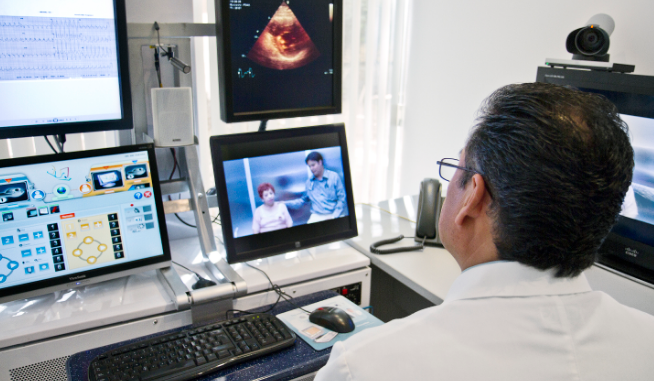
The healthcare industry has come a long way as a result of hardworking professionals and technological advancements. Without both of these inputs, the quality of care that patients would receive wouldn’t be anywhere near as effective as the care they receive today. In fact, some of the most impactful innovations in the industry can be attributed to technology. One practice in particular, telemedicine, has proven quite effective in these unprecedented times. Throughout this post and accompanying infographic, the process known as remote patient monitoring will be broken down and detailed.
Remote patient monitoring has been a practice utilized for some time now, but never quite provided the value that it does now. This method of care requires using systems that allow health care professionals to oversee a patient without them being physically present in their facility or hospital. The devices that facilitate this experience allow professionals to track the necessary vitals and information securely. This information is then transferred back to the health care providers and is stored in their electronic health records.
Which devices are supported throughout remote patient monitoring, though? Just a few examples include: blood pressure cuffs, blood glucose monitors, spirometers, scales and much more are all able to be used from a patient’s home. As patients become more comfortable with these devices and the applications they have to use to transmit the data the devices collect, they’re better able to understand their conditions and the precursors for indicating they’re not in good health. This is imperative when considering the effectiveness of this method of care.
It’s not likely that the number of patients looking to remote patient monitoring decreases any time soon, despite some states loosening the reigns on their COVID-19 restrictions. This is largely in part due to the fact that more and more people continue to be diagnosed with chronic conditions such as high blood pressure, heart disease or even diabetes. These conditions often require regular visits to the doctor but are often met with a bit of dismay from the patients. This is all alleviated with remote patient monitoring. Doctors are able to determine whether or not a patient requires immediate attention based on the data the devices feed to them, if all looks good, no need for patients to come in.
As it stands today, remote patient monitoring is in excellent status in terms of effectiveness. More and more patients are reporting that their remote monitoring has helped reduce their blood pressure more significantly than self-monitoring alone. Additional patients have also reported much more control over their asthma throughout the remote monitoring process, meaning less reliance on their rescue medication.
Not only has this method of care proven to be effective for its patients, it’s also become massively covered by many insurance providers. Meaning the likelihood of patients to consider remote patient monitoring is much higher. As more and more patients opt to this method of care, the greater the relief that primary care physicians are able to receive. In connection with COVID-19, more and more people are seeking immediate medical attention to the point where physicians are being overwhelmed. Those that require care for non-COVID related issues can be served through remote patient monitoring much faster. To continue scratching the surface of remote patient monitoring, take a moment to check out the resource coupled alongside this post. Courtesy of Pivot Point Consulting.


Leave a Reply